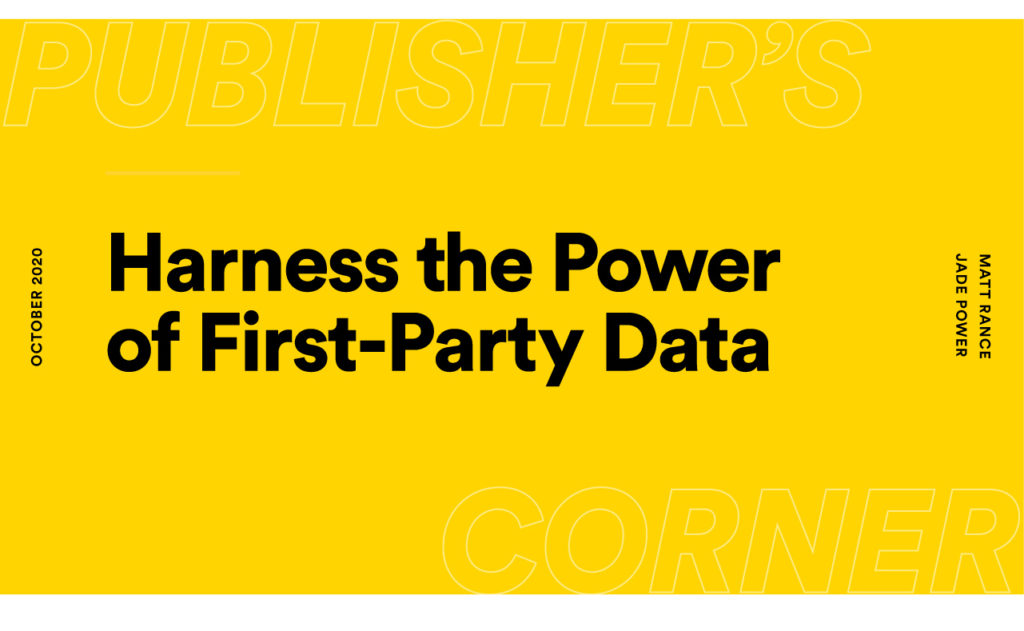Unlike third-party cookies, first-party data (information that consumers have directly given a publisher on a single domain) can help tell a more complete story about who your readers are: their interests, their behaviors, and why they are visiting your website. Common ways for publishers to get first-party data include subscription sign-ups and/or registrations (name, email, phone number, etc.), and by tracking user engagement through DOM events such as clicks, scrolls and view time. Ultimately, first-party data is intrinsically valuable as a way for publishers to build advertising, data, and even content strategies.
In the most recent edition of Publisher’s Corner, Matt Rance of Immediate Media and Jade Power of JPI Media break down how they are leveraging their first-party data in preparation for the sunsetting of third-party cookies, and also provide insights into how other publishers can navigate the changing advertising landscape.
Journey to a First-Party World
Both Immediate Media and JPI Media started their transition to the world of first-party data by partnering with Demand Management Platforms (DMP) that could collate their first-party data. By bundling that data into segments, they were able to make it accessible to SSPs, DSPs and ad networks. By partnering with the right DMP, both publishers were able to offset their need for third-party tracking entirely. Before the move, however, both publishers used a period of time to overlap first- and third-party data, learn from their performance, and make adjustments to their strategies.
With just over a year left until Google Chrome dumps the third-party cookie, publishers have a unique opportunity to test how campaign KPIs are affected when audience segments are formed only by first-party data, only third-party data, as well as a combination of both. From there, publishers can develop strategies to expand and enhance their ability to acquire first-party data.
First-Party Strategies
By taking control of and understanding their data, Immediate Media was able to make informed, data-driven decisions on the most effective methods of acquiring first-party data on each individual property they own. Just as Immediate formed different strategies for each of their properties, other publishers will also have to determine what works best for their websites’ audiences and advertisers KPIs.
Considering all of the worrying “cookiepocolypse” webinars and articles, it may be difficult to see that there are some golden opportunities for publishers in cookieless browsers. As first-party data is acquired directly from consumers, a publisher’s strategy should be built around quality content that engages consumers and makes them want to come back for more. From there, publishers can work on products and services (i.e. event/webinar registrations, polls, newsletter sign-ups) that enhance the value to consumers as well as transparently collect unique first-party data from their audience.
As Matt states, publisher strategies will have to adjust over time: “The tech, the strategies, the tools we have now are very different from 2 or 3 years ago, and expect them to be different 2-3 years from now.” In this world of uncertainty, let’s examine how publishers can adequately prepare for the future.
Power to the Publisher
Whether you’re a large publisher with multiple domains and engineering teams, or a small independent blogegr, there are steps you can take to prepare for a cookieless world, today. Here are few suggestions from Matt & Jade:
- “Tidy up your ad stack”: ensure your technology providers are GDPR and/or CCPA-compliant and have a plan for upcoming browser changes
- “Be a part of the conversation”: join the IAB’s Project Rearc, the W3C’s Web Advertising Community Group, or the Partnership for Responsible Media (PRAM) and voice your opinions
- Take on a “consultative” role: work directly with other publishers, SSPs and/or advertisers on strategies to maximize the effectiveness of everyone’s first-party data and shape what future solutions look like (e.g. standardized audience taxonomies)
By doing what they love most—creating high-quality, engaging content and interacting with their unique audiences—publishers are cultivating what is considered the new “currency” of digital advertising. With publishers in control of first-party data, they have the opportunity to lead the conversations of how the cookieless web will operate and drive toward a more transparent ecosystem that continues to serve the needs of content creators, advertisers, consumers and the open web itself.
Get Involved!
- W3C Privacy Community Group (free)
- W3C Improving Web Advertising Business Group (participation fee)
- IAB Project Rearc (free)
- Partnership for Responsible Media (free)
- DMPs

